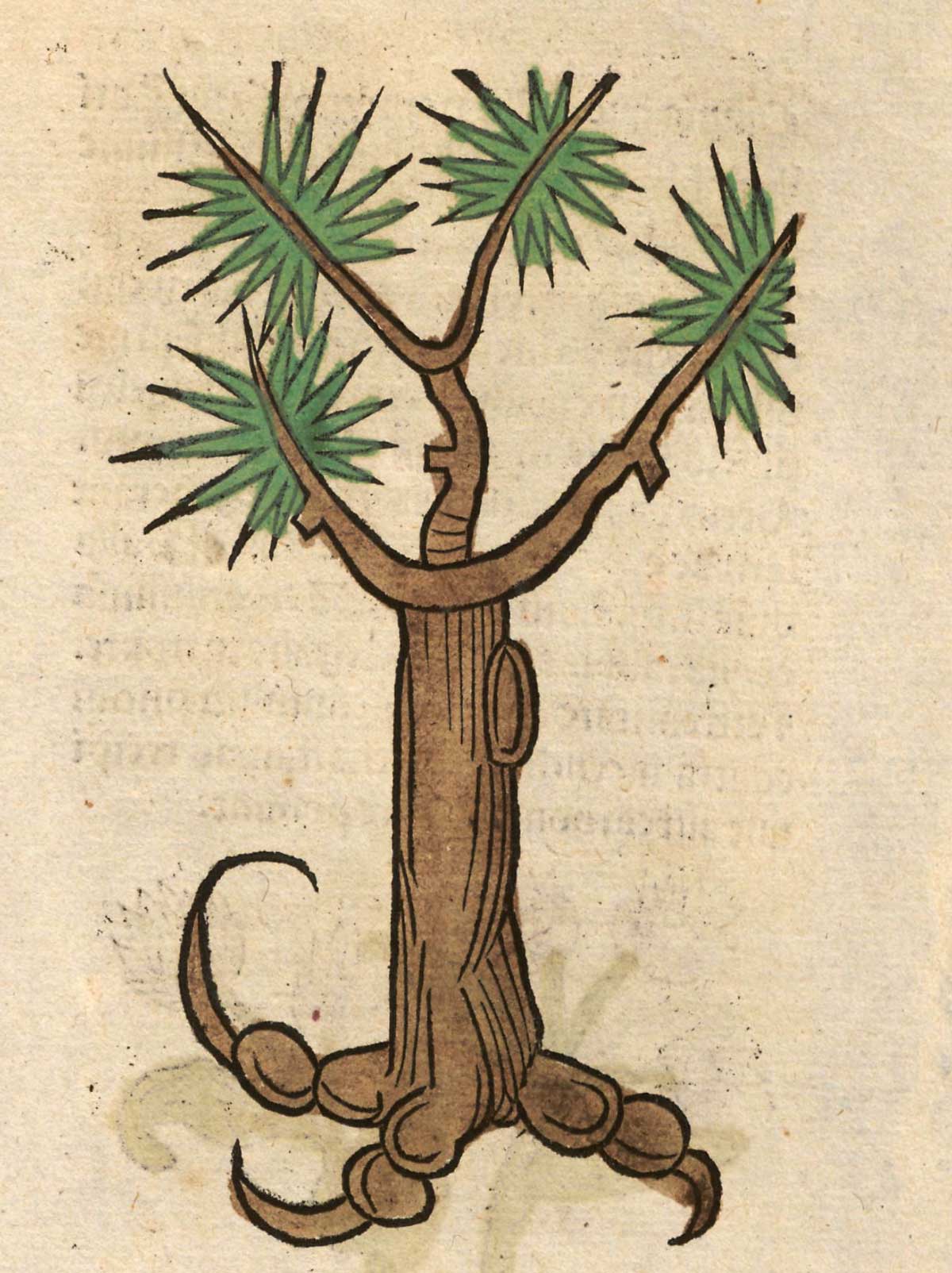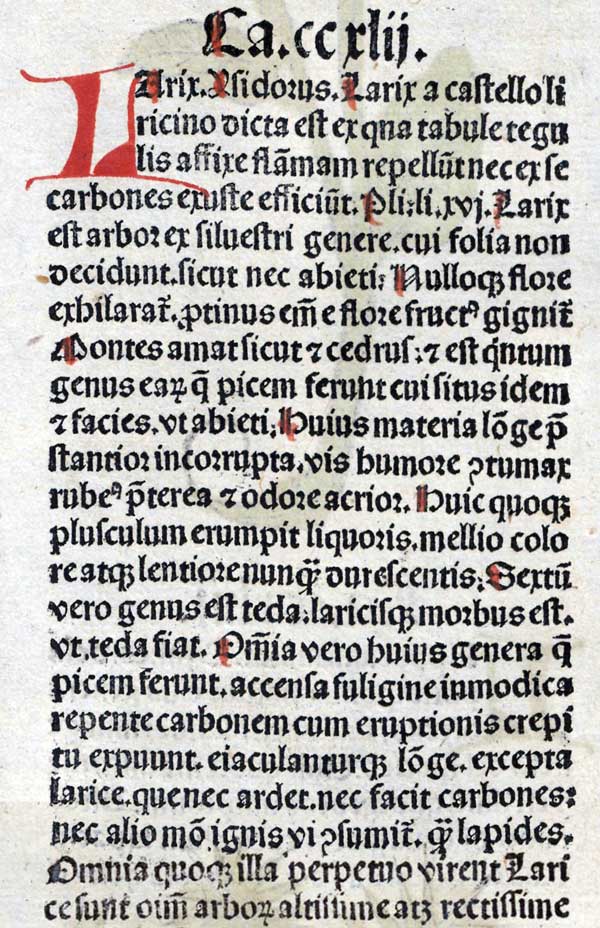Notes
Larix
Larix (text)
larix
Quinto generi est situs idem, facies eadem; larix vocatur. materies praestantior longe, incorrupta aevis,1 umori contumax, rubens praeterea et odore acrior. plusculum huic erumpit liquoris melleo colore atque lentore, numquam durescentis.… Omnia autem haec genera accensa fuligine inmodica carbonem repente expuunt cum eruptionis crepitu eiaculanturque longe excepta larice quae nec ardet nec carbonem facit nec alio modo ignis vi consumitur quam lapides.
The fifth kind of resinous tree has the same habitat [mountains and cold localities] and the same appearance; it is called the larch. Its timber is far superior, not rotting with age and offering a stubborn resistance to damp; also it has a reddish colour and a rather penetrating scent. Resin flows from this tree in rather large quantities, of the colour and stickiness of honey, and never becoming hard.… All these kinds of trees when set fire to make an enormous quantity of sooty smoke and suddenly with an explosive crackle send out a splutter of charcoal and shoot it to a considerable distance—excepting the larch, which does not burn nor yet make charcoal, nor waste away from the action of fire any more than do stones.
larege
Ce mot, ainsi que Larignum, vient de Larix, Larigis.
Larege
Larège, terme vénitien et padouan, a donné large en patois genevois et savoyard.
larege
«Larege, Un arbre retirant à un Pin ou Sapin, Larix laricis. Les Venitiens l’appellent Larege, les Montagnars le nomment Melze», écrit Nicot. Sur l’agaric, voir Pline, XXV, 9, et Ruellius, De natura stirpium III, 1 : ce champignon était utilisé en médecine. La résine de mélèze est décrit par Pline, XVI, 10, et vantée par Galien, De compositione medicamentorum per genera, I, 12. Le «miel du ciel», ou «manne», qui, à l’aube, degoutte notamment sur les feuilles de mélèze, est examiné par Langius, Epistolae medicinales, LXIV. L’incombustibilité du mélèze est assurée par Pline, XVI, suivi par un foule d’auteurs.

